| Tech Article Title | Author | Date |
| Turning Water into Horsepower | Jeff Jones | 2006 |
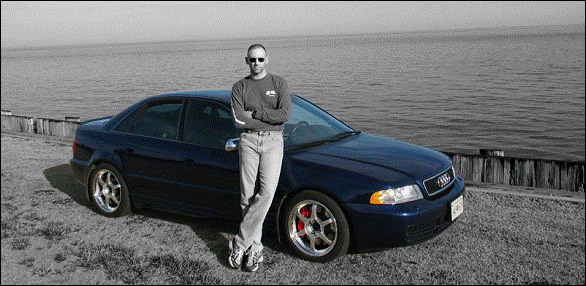
Water injection, amongst the many options for increasing engine performance, this subject is probably one of the least understood. While frequently dismissed as simply a Band-Aid for poor intercooling, the benefits of water injection stretch beyond simply cooling engine intake air, and when properly implemented, can lead to more power than intercooling alone.
Water injection can be traced back to the earliest years of the internal combustion engine. During the early 1930’s one of the foremost engine designers and researchers, Sir Harry Ricardo, whose studies on pre-ignition led to the development of the octane rating system, investigated the problem of pre-ignition and the affect of alcohol-water injection on inhibiting detonation. Later, during World War II, the National Advisory Committee for Aeronautics, in studies aimed at increasing the power from aircraft piston engines, came to the following conclusion: “The data indicated that water was a very effective internal coolant, permitting large increases in engine power as limited by either knock or by cylinder temperatures.”1 More recently, Saab engineers have investigated using water injection on their production vehicles to maintain low emissions at high power levels. Clearly, the practice of injecting water into an engine is not new, and its benefits are well documented.
Why use water injection?
Engine power production, referred to as brake mean effective pressure (BMEP), is measured by taking the average effective pressure of the cylinders as they progress through intake, compression, ignition, and exhaust strokes. Added power comes as a result of greater pressure, but a higher temperature inside the cylinder accompanies greater pressure. These higher temperatures can lead to detonation, referred to as engine knock, or pre-ignition, both of which are cases where the fuel-air mixture burns in an undesirable manner and can be destructive to an engine. To combat knock and pre-ignition as power increases, a richer air-to-fuel ratio is normally required. If the addition of extra fuel doesn’t provide enough knock protection, then a higher-octane fuel, which is more resistant to knock and pre-ignition, may be used. However, once the knock limit of a higher-octane fuel is reached, can anything be done? This is where a water injection system presents an appealing option.
Water vs. Gasoline
When it comes to absorbing heat, water is far more effective than gasoline. For some perspective, consider: the amount of heat energy needed to vaporize one cup of liquid water would be sufficient to vaporize almost half a gallon of gasoline.
Specific heat is used when describing the capacity for heat absorption. Specific heat is the amount of heat energy (joules) per unit mass (grams) required to raise the temperature of a substance by one degree Celsius. The greater the specific heat, the more energy a substance absorbs before it heats up. Gasoline has a specific heat value of 2.02 joule/gram-°C. Water has a specific heat of 4.18 joule/gram-°C. This means, for an equivalent volume, liquid water will absorb about twice as much heat as gasoline while increasing in temperature the same amount. Or put another way, for a given quantity of gasoline, half as much water is as effective when it comes to absorbing heat energy.
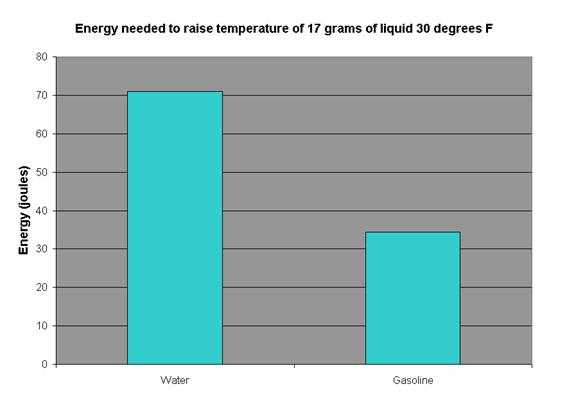 Fuel and other liquids also have a property called the latent heat of vaporization. This refers to the heat absorbed when a substance changes phase from liquid to gas. In this respect, water is even more effective at absorbing heat energy, with a latent heat of vaporization about 6-7 times that of gasoline.
Fuel and other liquids also have a property called the latent heat of vaporization. This refers to the heat absorbed when a substance changes phase from liquid to gas. In this respect, water is even more effective at absorbing heat energy, with a latent heat of vaporization about 6-7 times that of gasoline.
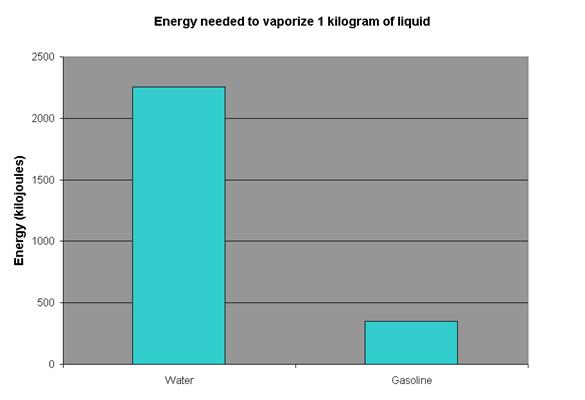
Returning to the original question, why might one want to use water injection in an engine? Because at some point, as you increase power (BMEP), the engine reaches a limit where no more fuel can be added to combat knock during combustion. Water can then be introduced to prevent knock, allowing more power to be produced. It is worth pointing out that the extra gasoline that is added to the combustion chamber to combat knock does not get burned because there isn’t enough oxygen present to support burning it. Therefore this additional fuel does not contribute any energy to produce power, it is there only to prevent knock, and is exhausted from the cylinder with the combustion by-products. Because water is much more effective in this role, a small amount of water can replace the larger quantity of excess fuel, allowing the engine to run a more desirable air-fuel ratio, and the water will be more effective at cooling inside the cylinder and preventing knock. The end result is that with the help of water injection the engine can produce more power, while consuming less fuel, than it otherwise would.
When to use it?
Water injection is not always necessary; otherwise we would all be driving cars with a water injection system. However, if you’re trying to get more power from an engine, at some point a water injection system becomes an alternative that is worthy of consideration. What if you were tuning an engine to produce greater power, but didn’t want to use higher-octane gasoline? Could you run a motor on regular pump gas with water injection and get improved performance? This was the situation I found myself in. I wanted to see if I could get more performance from my car while running the engine on ordinary 93-octane pump gas.
The equipment
The first requirement is to have a car that can tap the benefits of water injection. While a normally aspirated engine with high compression could benefit some, it is on forced induction vehicles, turbocharged or supercharged, that water injection can provide significant gains. My turbocharged S4 equipped with an Audi Performance and Racing (APR) Stage III kit was an ideal candidate for using water injection. The APR Stage III kit is built around the larger K04 turbochargers used in the B5 platform Audi RS4. A number of other RS4 parts replace stock S4 components to accommodate the K04 turbochargers, including larger fuel injectors and fuel pump. The ability of the K04 turbochargers to run much higher boost than the S4 with stock K03 turbochargers, up to 21 psi with APR’s software compared to 9 psi on K03 stock software, led me to upgrade some of the cars intake and exhaust components. I replaced my stock downpipes with AWE Tuning’s downpipes and the exhaust with Supersprint’s catback system. The greater pressure developed by the K04 turbo’s would result in hotter air entering the engine, so I replaced the stock S4 intercoolers with AWE Tuning’s larger side mounted intercoolers.
The water injection system I assembled was built around the Aquamist brand 2d system and was installed by Cascade Autosport, a race and rally preparation company located in Redmond Washington.
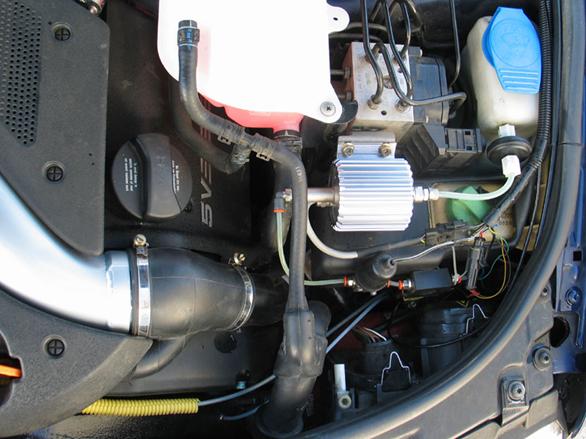
The water injection system requires no involvement from the driver once it has been configured and powered up, other than monitoring the water flow gauge and blockage indicator to ensure water is flowing to the engine. The primary components of the 2d system are a fuel injection amplifier, adjustable pressure switch, high-speed valve, and 100-psi pump.
The system operates the following way: The fuel injection amplifier continuously monitors the signal going to the fuel injectors and will meter the amount of water to be injected in proportion to the amount of fuel being injected. This is important because too much water can reduce power production.
An adjustable manifold pressure sensor, shown below, is set to activate the system at a desired boost level. Ideally, water should be injected just before the engine encounters peak loads, when maximum torque is being generated.
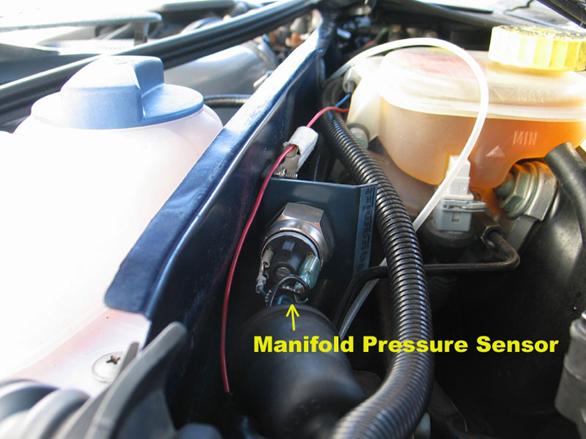
Once the boost threshold has been met the system activates and a high-speed valve opens allowing the water to be drawn from the windshield washer reservoir and through a filter (1 below) by the 100-psi pump (2). An inline regulator allows the water pressure to be adjusted as desired (3). The water goes through a flow meter (4), the high-speed valve (5), and a 100cc accumulator (not shown), that acts as a reservoir and shock absorber. The accumulator smoothes out the pulses from the pump and enables the system to flow slightly more water than would be possible from the pump alone. An added benefit of the accumulator is to provide additional safety in the event of a pump or high-speed valve failure. Should either of those components fail during operation, the accumulator has enough stored water under pressure to continue injecting water for 5-10 seconds.
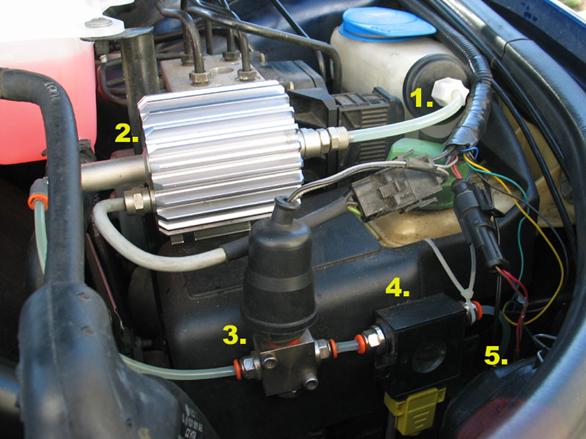
After exiting the accumulator the water splits and travels down two hoses that go to two separate jet nozzles placed just after each intercooler (shown in picture below).
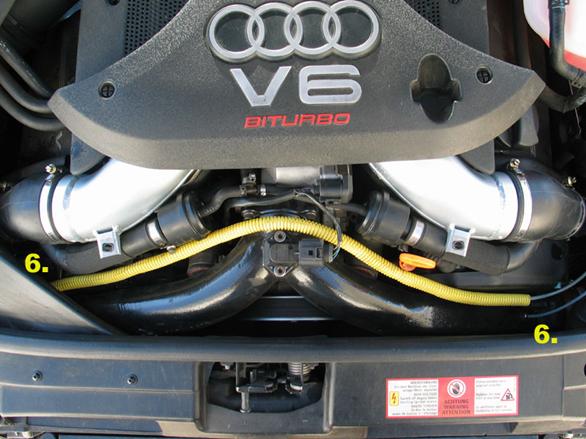
These jet nozzles turn the water into a fine mist and discharge it into the intake air stream (6). Placement of the jet nozzles is a subject unto its own, with various options being available. The most common locations for the jet nozzles are before the turbochargers, after the intercoolers, or into the intake manifold. There are various reasons why each location may be chosen, with differing results depending upon location, but the most common location is after the intercoolers, which is what I chose to do.
[page 2]